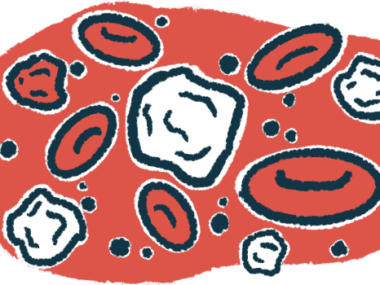Mayzent, vitamin D combo alleviates MS signs in mouse study
Combo may be novel strategy for improving life quality in people
Written by |

Using Mayzent (siponimod) and vitamin D3 as a combination therapy was found to improve motor function and promote remyelination — restoring the damaged myelin sheath around nerve fibers — in a mouse model of multiple sclerosis (MS).
“Our results demonstrate for the first time the potential synergistic effects of [vitamin D3] and [Mayzent] on enhanced remyelination in mice with [chemical]-induced demyelination,” the researchers wrote, citing among other benefits “improvement of behavioral deficits” in the animals.
“Therefore, combining these two treatments to treat MS patients may represent a novel strategy to accelerate remyelination, alleviate disease symptoms, and improve quality of life,” they wrote.
The study, “Therapeutic effect of combination vitamin D3 and siponimod on remyelination and modulate microglia activation in cuprizone mouse model of multiple sclerosis,” was published in the journal Frontiers in Behavioral Neuroscience.
A first test of a Mayzent-vitamin D combination therapy
In MS, the protective coating around nerve fibers in the brain and spinal cord, called the myelin sheath, is damaged. This is due to a self-directed immune response.
Mayzent is an approved oral treatment for MS designed to modulate the body’s immune response to reduce the frequency of relapses and slow disability progression.
Several observational studies have supported an association between low levels of vitamin D in the bloodstream and worse MS outcomes, including the development of more lesions, faster accumulation of disability, and more relapses.
Despite these findings, interventional clinical trials testing vitamin D supplementation against a placebo have yet to show a clear impact on MS disease.
In this report, researchers at King Abdulaziz University, in Saudi Arabia, evaluated a combination of Mayzent and vitamin D3 in a mouse model of MS. Vitamin D3 is a form of vitamin D found in animal sources, as opposed to vitamin D2, which comes from plants and fungi.
To induce MS-like disease, mice were fed a six-week diet of cuprizone (CPZ), a chemical that triggers the loss of myelin (demyelination) in the brain and spinal cord. To induce myelin repair (remyelination), CPZ was then removed from the food supply for another three weeks.
In the early demyelination phase, MS mice weighed significantly less than unaffected control mice, indicating worse health, but no differences in weight were observed at the end of the remyelination phase at nine weeks.
At week five, MS mice were divided into four groups: untreated control, oral vitamin D3 (800 IU/kg) treatment, Mayzent (1.5 mg/kg), and a combination of vitamin D3 and Mayzent. Each group was then examined during the early remyelination phase (lasting from week 5 to week 7.5), and the late remyelination phase (from week 7.5 to week 9).
The results demonstrated that weight loss in MS mice was attenuated by vitamin D3, Mayzent, and the combination treatment, during both the early remyelination and later remyelination phases.
Combining these two treatments to treat MS patients may represent a novel strategy to accelerate remyelination, alleviate disease symptoms, and improve quality of life.
In an open field test to assess overall motor function, MS mice showed a decrease in speed and total distance traveled starting after one week and lasting to nine weeks. Compared with untreated MS mice, those given the vitamin D3/Mayzent combination demonstrated an increase in the distance traveled, but no changes were seen in the other treatment groups.
In comparison, MS mice treated with vitamin D3 and the vitamin D3/Mayzent combination moved faster than untreated MS mice during the early phase but not later. Mayzent alone appeared not to affect walking speed during either phase.
Using a grip test to assess muscle strength showed that mice treated with vitamin D3, Mayzent, and the combination therapy had some grip strength improvements in the early remyelination phase compared with untreated controls. During the late remyelination phase, Mayzent and the vitamin D3/Mayzent combination continued to be significantly better than no treatment at improving grip strength, but not vitamin D alone.
A rotarod test for motor coordination suggested that all three treatment regimens slowed motor decline compared with untreated controls in the early phase and vitamin D3 and vitamin D3/Mayzent in the later stage. Again, Mayzent showed no effect on motor performance.
Assessing the use of the combination therapy in mice
Brain tissue analysis confirmed a near-complete loss of myelin during the early phase and a partial myelin recovery during the later phase, which was still below controls. All treatment regimens improved myelin repair in both stages.
Likewise, in brain tissue, all three regimens altered the activity of genes that encode proteins associated with disease activity, including lowering iNOS, an enzyme associated with inflammation and neurodegeneration.
Production of the proinflammatory immune signaling protein interleukin-1 beta also was suppressed by vitamin D3 and the vitamin D3/Mayzent combination, but not by Mayzent alone.
Finally, myelin basic protein, thought to play an important role in myelination, was low in untreated mice but significantly increased with vitamin D/Mayzent combination — although not with vitamin D or Mayzent alone.
According to the researchers, this is the first study to show the possible synergistic effects of using the approved therapy in combination with vitamin D.
“Therapeutic effects of this combination were observed at several levels,” the team wrote, concluding that the vitamin D3 plus Mayzent shows promise as a treatment for human patients.







